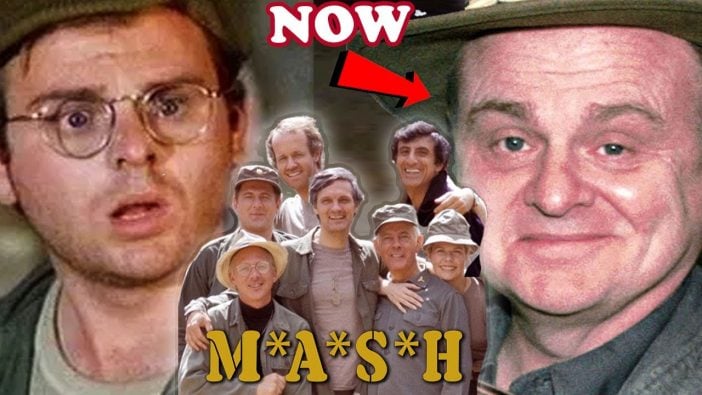
*FAQs at the bottom of article*
1/10/2024
Through early morning fog, there are visions of the things to be. And those things today are updates on everyone’s favorite Captains and Majors and Corporals. Welcome to basic training, Maggot! … Apologies for that particular greeting; perhaps we’d have been better off by just saying, “Welcome!” and look at this as an opportunity to catch up with the M*A*S*H cast who brought to life a little hospital unit in Korea, and out of it created unity and laughter for a nation.
Enjoy our M*A*S*H cast then & now video below! 🙂
M*A*S*H ran for a whopping 11 seasons — which is even more impressive when you consider that the Korean War it’s based on only “ran” for two-and-a-half-years. It quickly became the gold standard for television programming back in the ’70s and into the ’80s and spurred on two spin-off shows, Trapper John, MD and AfterMASH; and the pilot for a third, 1984’s W*A*L*T*E*R. Much of the credit for this great success goes to the incredible cast of actors, who, led by Alan Alda, grabbed the nation’s attention for over a decade. And when the journey finally ended, we all watched. Let’s revisit those very actors, and see what led them to M*A*S*H, and what some of the cast is up to today after hanging up their dog tags for good.
1. Alan Alda (Dr. Benjamin Franklin “Hawkeye” Pierce)

Alan Alda was undoubtedly the spine of M*A*S*H, not only by being the lead actor, but proving it by the fact that no matter how many cast members changed around him, the show went on. But being the lead was just part of the equation, as he often wrote and directed episodes for the acclaimed series. This includes the movie-length finale that shattered the record books with 121 million viewers. In total, Alan actually directed 31 episodes of M*A*S*H, the first coming in season 2 with “Mail Call.”

He wrote and directed three movies after honing his craft on that Army Surgical Base in Korea (and writing and directing 1981’s The Four Seasons, costarring Carol Burnett). He completed Sweet Liberty in 1986 starring himself, Michelle Pfeiffer and Michael Caine. Two years years later he shot A New Life, in which he co-starred with Hal Linden, and Ann-Margaret. Then, in 1990, he directed Betsy’s Wedding, costarring alongside Joey Bishop and Madeline Kahn. That would be his final directorial effort, Alan preferring to concentrate fully on his specific acting roles, rather than split his attention in two distinct areas.
RELATED: Reminisce About Some Of The Best Television Series Finales Ever
Alan, who was born Alphonso Joseph D’Abruzzo on January 28, 1936 in the Bronx, New York, actually grew up in the wings of Burlesque theaters, as his father was a traveling actor and singer, while his mother was a homemaker and a former beauty pageant winner. At an early age, Alda was taking part in Burlesque sketches at his family’s home, learning how to fit into broad comedy, and working with career performers.
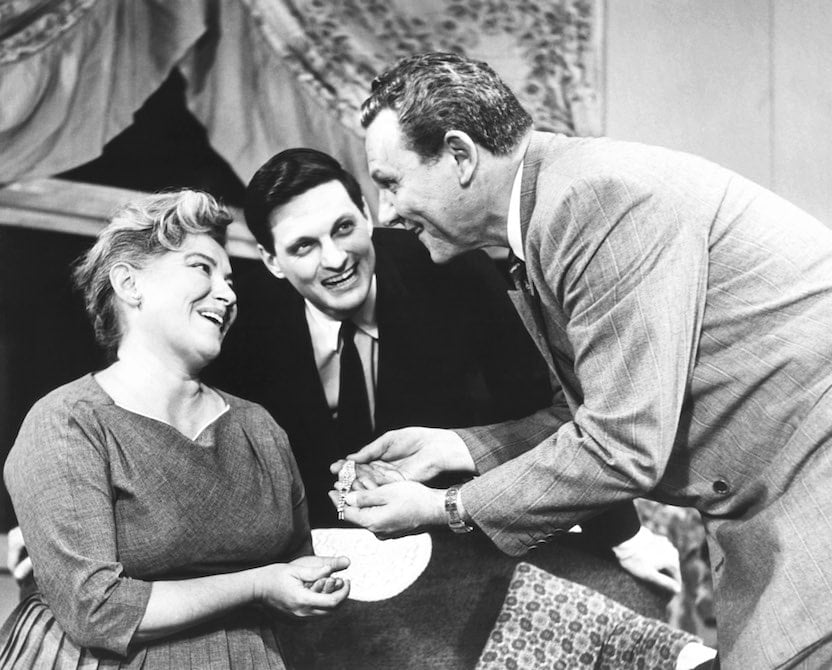
In a 1970 profile of him that was published by The Los Angeles Times, the piece detailed, “The family traveled extensively; his father did USO tours, appeared in nightclubs, performed in burlesque and vaudeville. ‘One of my most vivid memories is going to sleep every day at 5 o’clock in the morning,’ says Alan, ‘in our apartment over a gambling casino in Louisville.’ He lived in Hollywood from the age of 7 to 14. In high school he decided he wanted to be a comedian ‘like Sid Caesar. But then I began to develop my taste for acting. Jokes are an avoidance of life.’ His father, Alan says, ‘was very ambivalent. He kept teaching me how to tell jokes and telling me not to be an actor.'”

At 16 he became an apprentice at summer theater in Barnsville, Pennsylvania. While in college he joined the Broadway-bound play Hot Corner, which saw him costarring with Hope Lange, Don Murray and Sam Levene. Unfortunately, the play closed after just three performances. “I was in so many bad plays,” he told the Times, “I got to know how long it would run. A week, two weeks, six months.”
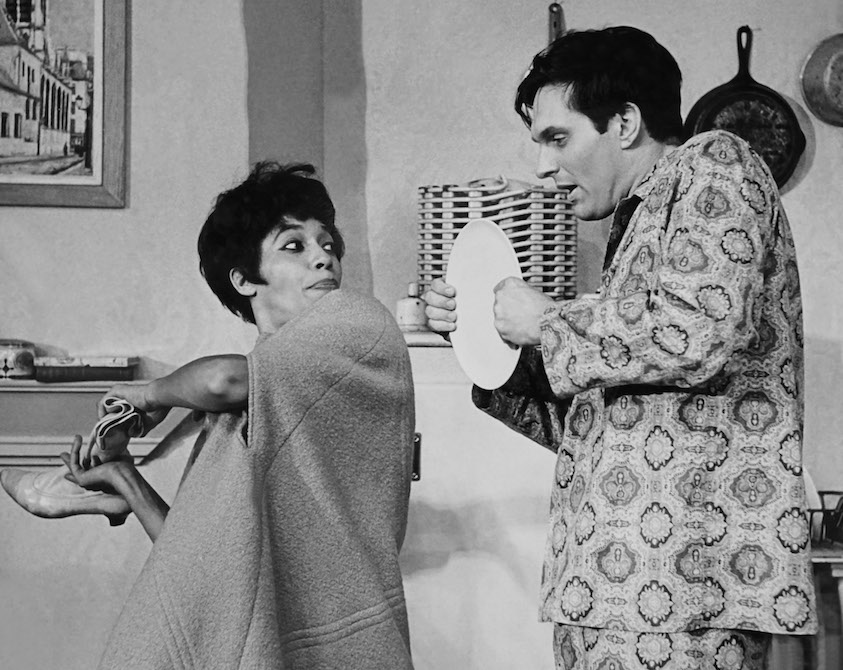
Between gigs, he took on a variety of jobs, including working behind the counter in chicken parts stores, a clown at supermarket openings, a cabbie and actually a human guinea pig for a psychiatrist experimenting with hypnosis. “The experience was invaluable,” he said. “Not only as a person, but as an actor. I began to realize what the body can attain at the command of the imagination. Then later on Broadway, I did The Apple Tree with Barbara Harris, who has that ability to use her body incredibly.” He would go on to make many stage appearances, including The Owl and the Pussycat.
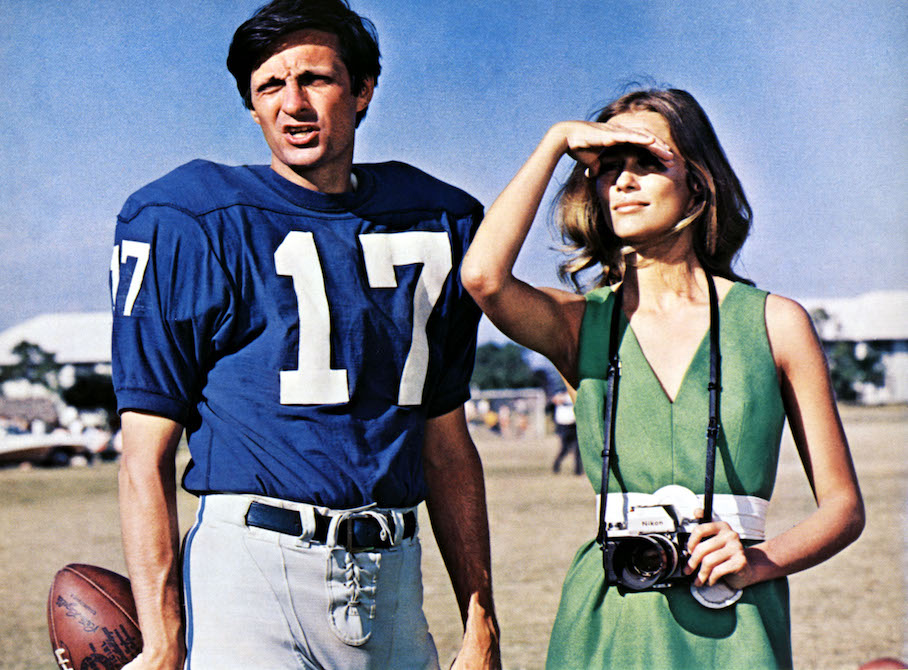
From his father, Alda did learn the importance of wit and spontaneity. And the early education paid off, as he was cast in his first TV role at 22 years old on a 1958 episode of The Phil Silvers Show. Between that and the debut of M*A*S*H, he guested on shows like Route 66, East Side/West Side and The Trials of O’Brien, as well appeared in the TV movies The Glass House and Playmates (both in 1972). On the big screen, he was in Gone Are the Days! (1963), Paper Lion (1968), Jenny (1970) and The Mephisto Waltz (1971).
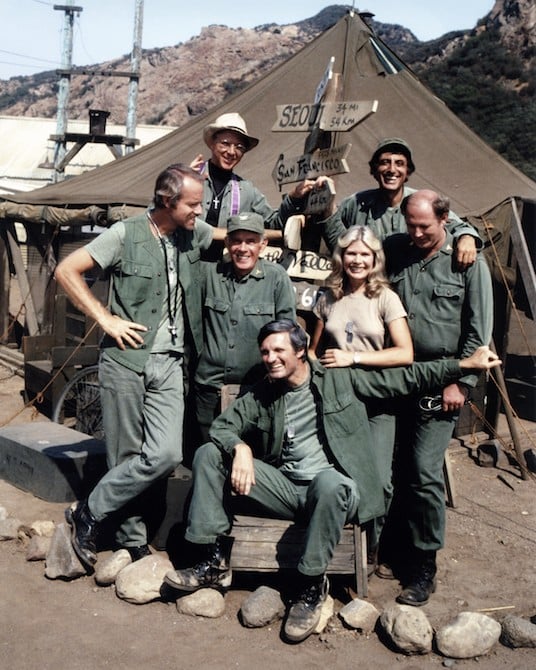
It was in the early ’70s when producer Gene Reynolds began putting the pieces together that would become M*A*S*H, based on the 1970 film of the same name. “I was hesitant at first,” he admitted to the Star-Phoenix in 1973, “because I was afraid it might deal lightly with war. I signed on as soon as I was convinced that it didn’t. I turned down a lead in Rosemary’s Baby — and in quite a few other movies, too — because I believe it is wrong to glorify brutality, to illustrate war unless you show that war is bad.”
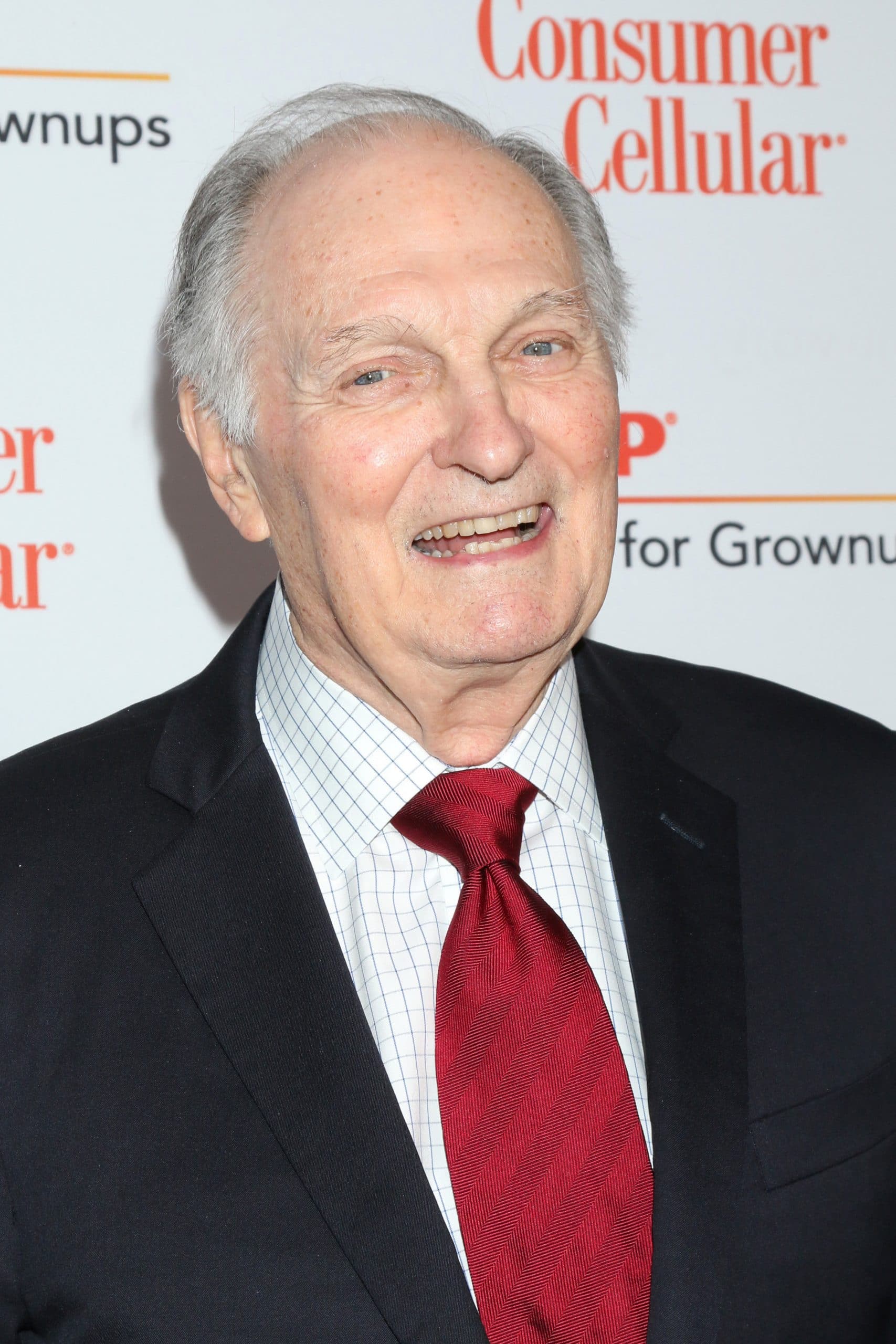
He would continue acting alongside Hollywood’s elite for as long as he desired. From successful Woody Allen flicks like Crimes and Misdemeanors to blockbusters like The Aviator, Alan’s done it all. And then there was his acclaimed stint on The West Wing as Senator Arnold Vinick. In recent years, he has been in several episodes of The Good Fight and Ray Donovan, reprising his role of Dr. Arthur Amiot from the latter in this year’s Ray Donovan: The Movie. On the big screen he was in Bridge of Spies (2015) and Marriage Story (2019). He does not currently have any projects in the works as he’s battling Parkinson’s Disease, but is doing his best to duke it out, saying, “You can hold back the progress if you do a lot of specific exercises, so I do a lot of crazy things.” You can also check out Alan’s podcast, Clear + Vivid.
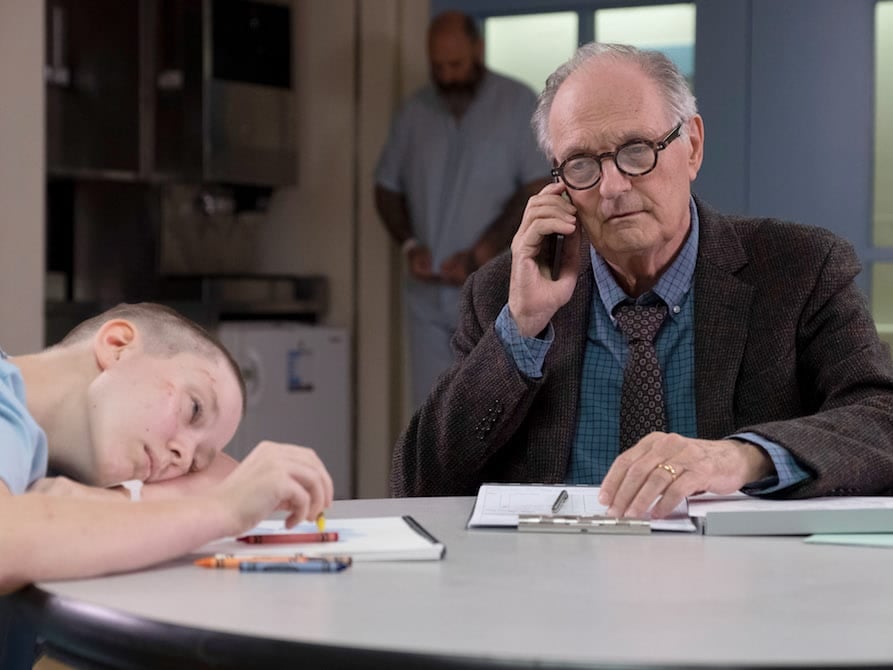
Alan,87, proved to be a workhouse on M*A*S*H and continued with that mindset for his entire career. One bit of intriguing trivia: he was the only man who was in both the first episode and the finale. Again, the only man, which brings us to Loretta Swit (aka Hot Lips Houlihan).
2. Loretta Swit (Margaret “Hot Lips” Houlihan)
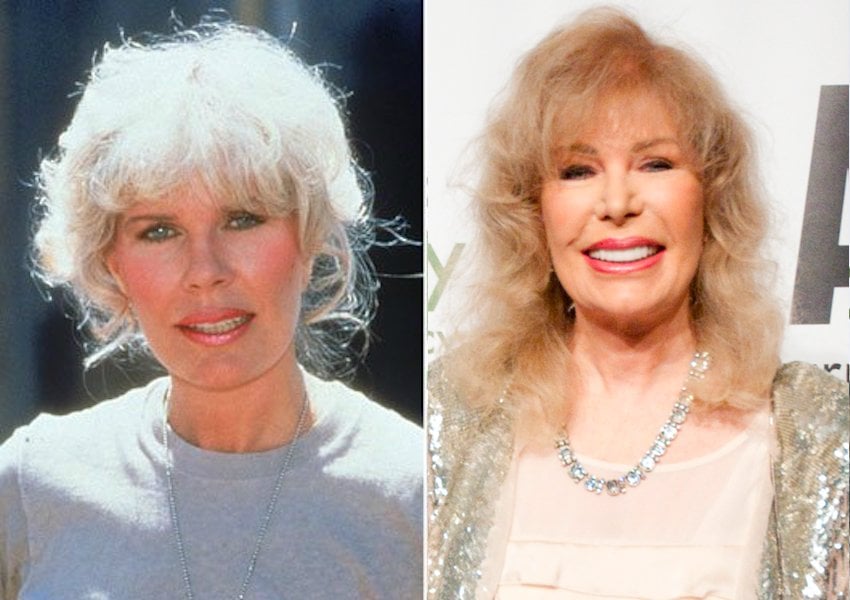
The only other actor from M*A*S*H who was in both the first and the final chapter of this iconic series was Loretta Swit (one of our 50 Fabulous Stars of the 1970s). She was so dynamic that showrunners tweaked the character to fit her wishes. Loretta naturally wanted Margaret ‘Hot Lips’ Houlihan’s character to grow during the course of the show, away from someone promiscuous and shrill, to a tough independent role model type. And by the end of the series, they had even stopped referring to her as Hot Lips.
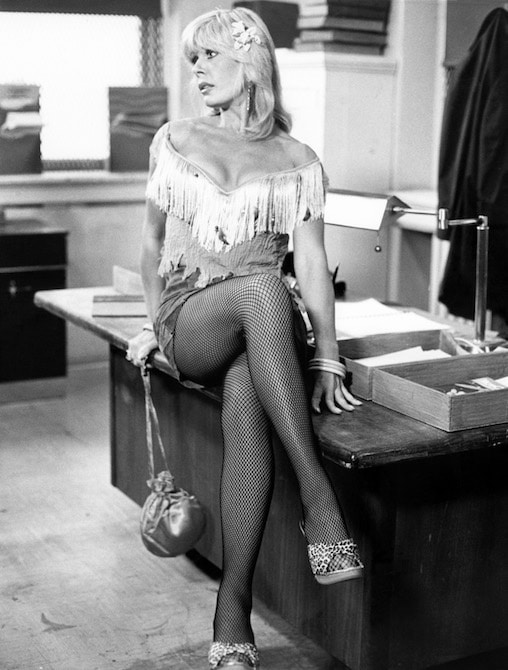
Loretta actually tried to quit the show during the 10th season, because she was up for the role of Detective Cagney in what would become Cagney & Lacey. Unfortunately, contracts and studios rarely give up control, and CBS didn’t shock anyone — even her — when they refused to allow the show swap. Loretta did wind up playing Cagney in the TV movie pilot of the same name, which received great reviews and ratings. Unfortunately, the studios held firm, so Sharon Gless took her place and starred on the show for six years.
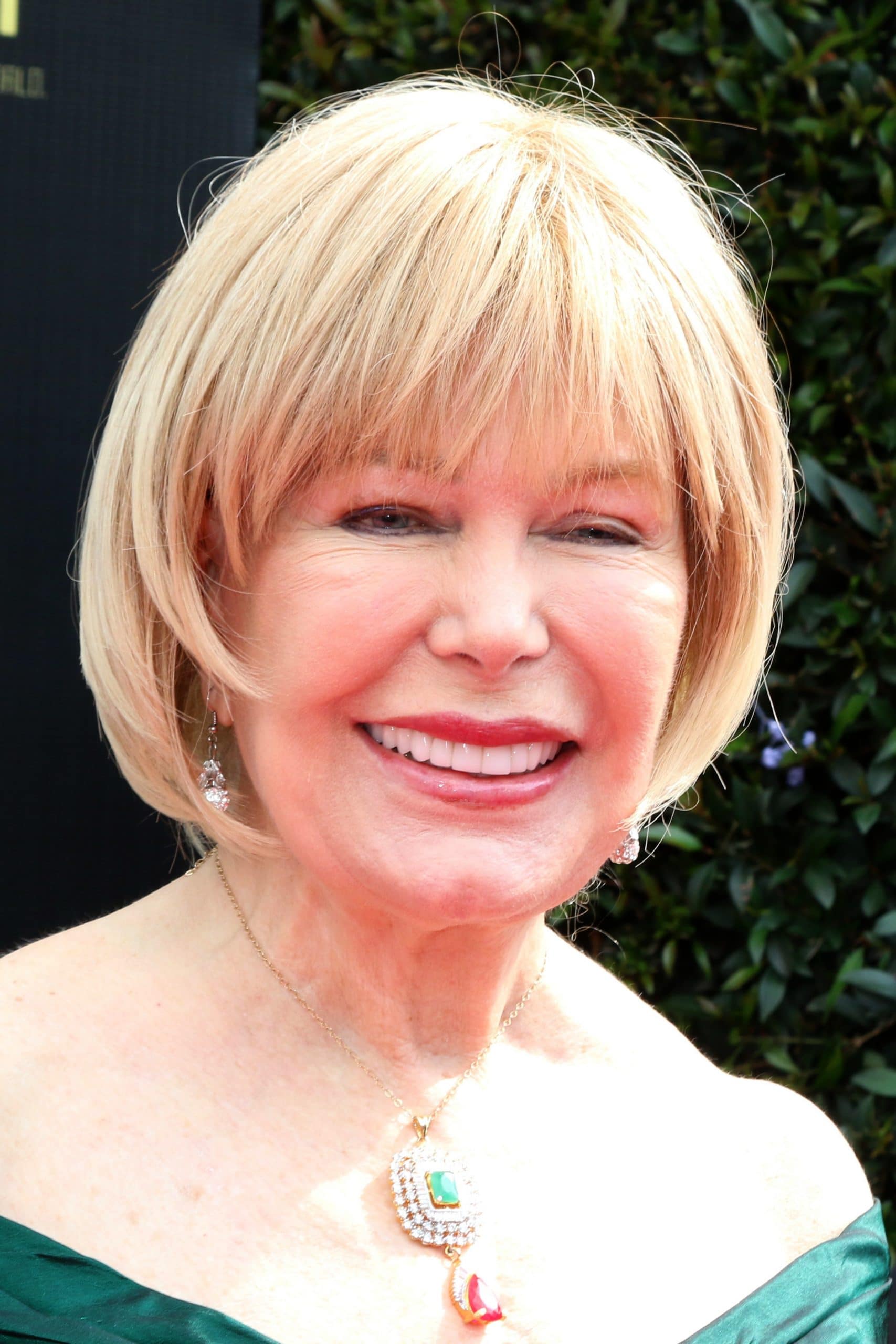
Born November 4, 1937 in Passaic, New Jersey, she made her Off-Broadway debut in An Enemy of the People in 1961, a production of the Actor’s Playhouse, which was followed by the Circle in the Square production of The Balcony. Next up was the national tour of the play Any Wednesday and then she became one of the Pigeon Sisters in the Los Angeles production of Neil Simon’s The Odd Couple, which starred Don Rickles and Ernest Borgnine. She would return to the stage repeatedly, most recently in 2017’s Six Dance Lessons in Six Weeks.
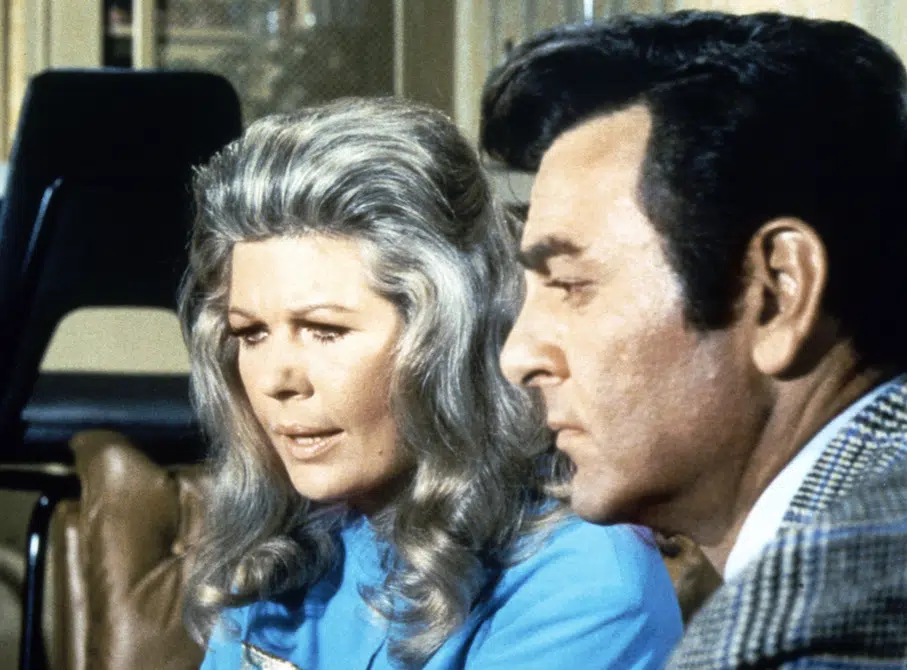
Television began calling in 1969 and between then and 1972, she appeared in four episodes of Hawaii Five-0, as well as Mission: Impossible, Mannix, Gunsmoke, and The Bold Ones: The New Doctors. Her movie debut was in 1972’s Stand Up and Be Counted.

After signing on to M*A*S*H, The San Francisco Examiner offered up a profile in which the actress detailed that she was actually shy, and was enjoying the opportunity to essentially hide behind the character of Hoolihan. “I’m basically a person, and that takes in a lot of territory,” she said. “I’m very capable, I’m very vulnerable. We all like to cling to familiar things. impossible to give up. I’m too secure with those things.”
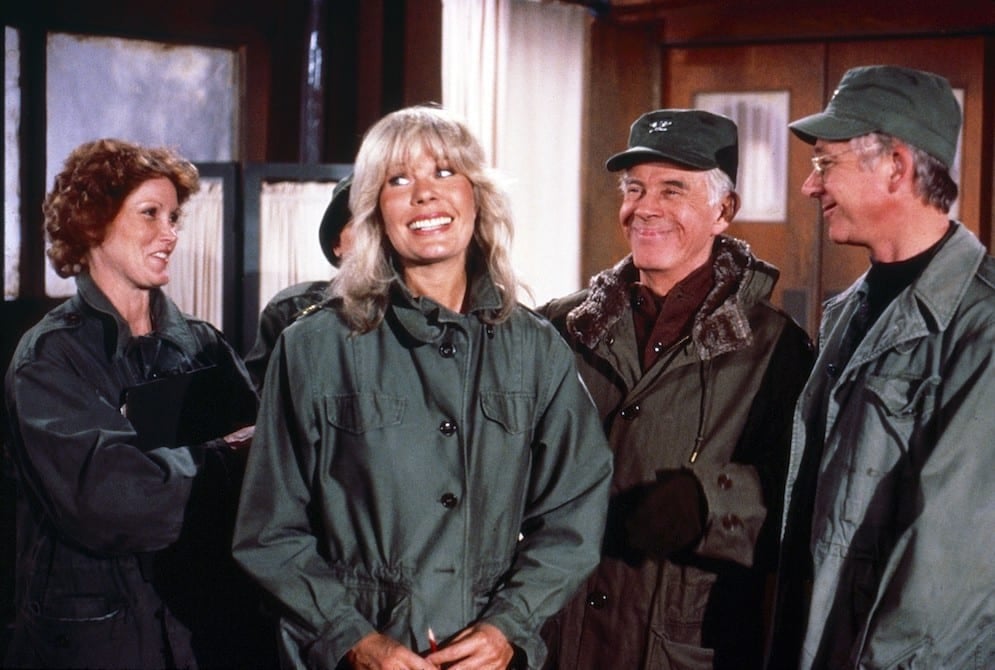
In the same piece, she also shared her views on acting itself: “I guess it’s the only profession I’ve ever been in that has given me security, even though I’m still an insecure person. Yet I thrive on pressure, and TV is pressure. I even create my own pressures and deadlines. Nobody forces them on me — I create these demands myself. On the weekends, sometimes I miss the hectic schedule of M*A*S*H. I don’t like vacations. I go away from my securities, and I don’t like that.”
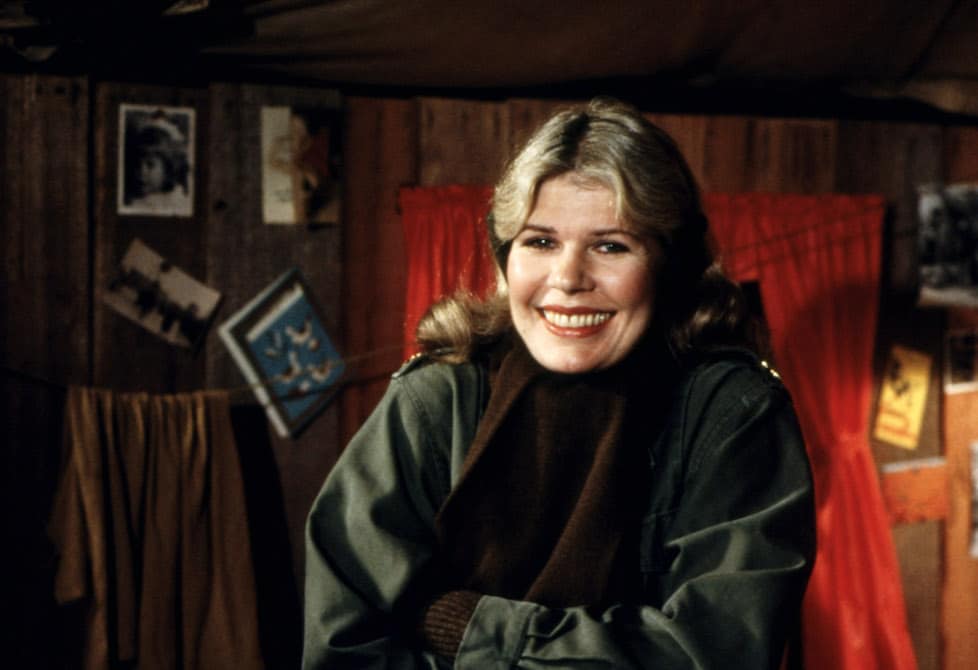
She continued to work in TV movies and guest spots on shows through the ’80s and much of the ’90s, though she never did strike gold again. Swit, 86, seemed to have stopped acting in 1998 with a final role in Beach Movie, but two decades later, in 2019, she dusted off her acting chops and played Mrs. Kincaid in Play the Flute, an almost entirely unknown Christian-music based movie. She’s also very involved with animal rescues and has even written books about it. As to why M*A*S*H endures so many years later, she has her own theory.
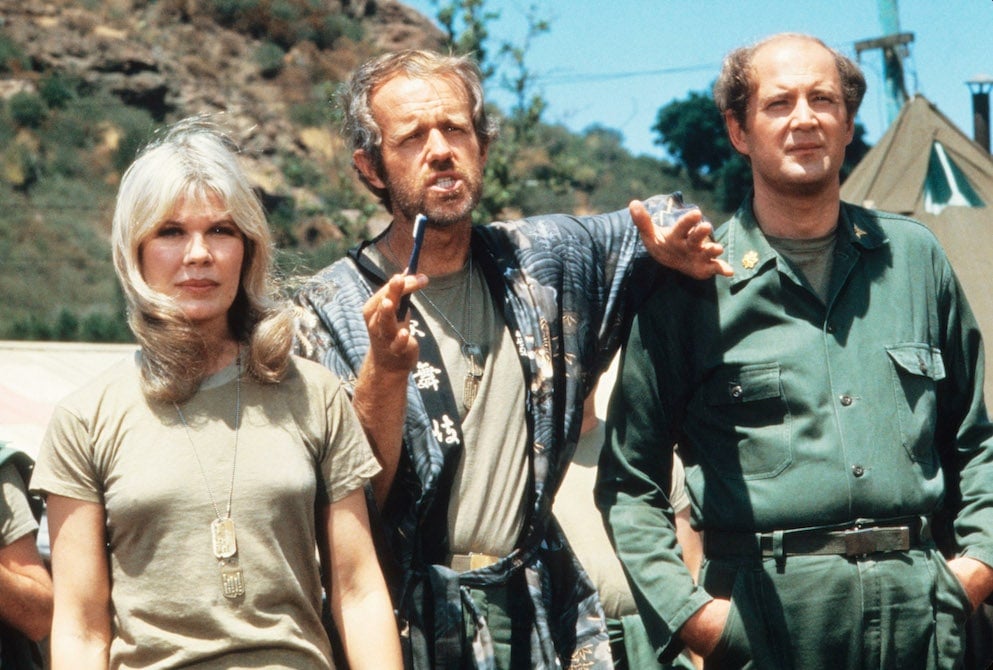
“We became members of your family after 11 years of being in your kitchen and your bedroom, your living room, your den and so forth,” she muses. “I think the characters were so painfully human, it was easy to adopt us into your family. And you haven’t seen us collectively in a while. I mean, we see each other all the time. We always laugh when everybody says, ‘It’s a reunion.’ It’s like, ‘Are you kidding? I just had lunch with him.’”
3. Jamie Farr (Sergeant Maxwell Q. Klinger)

It’s interesting to note that Jamie Farr and Alan Alda were the only two main cast members to have actually served in the U.S. Army in South Korea. And that both of them did their tours of duty after the 1953 cease-fire. Farr was drafted and began his time completing training films for the Army before going overseas to Japan and being part of Armed Forces Radio. But things changed dramatically thanks to a good friend back home by the name of Red Skelton. It seems that Red’s 12-year-old son had just died of Leukemia and he just needed to get away while also wanting to fulfill a deeper mission. He decided to request Farr’s support from the state department in his own efforts to entertain the troops, so basically Red plucked Jamie from being a private and raised him up. They began performing and touring throughout South Korea.
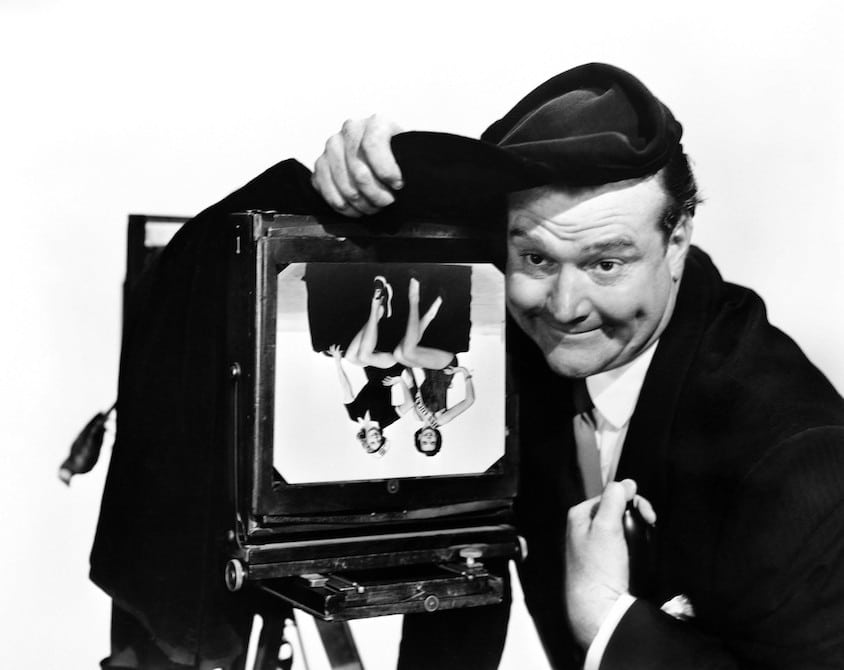
Even after the war, Red continued to lift up Jamie. After his father passed away, he was in limbo. Worries about home were pushing him to abandon his current path of comedy and entertainment. Luckily, Red didn’t see that as an option, claiming Farr was, “A doctor of comedy” and personally employed him in a way that supported his family back home. Who knew that we had Red Skelton to thank in part for the magic of the M*A*S*H ensemble?
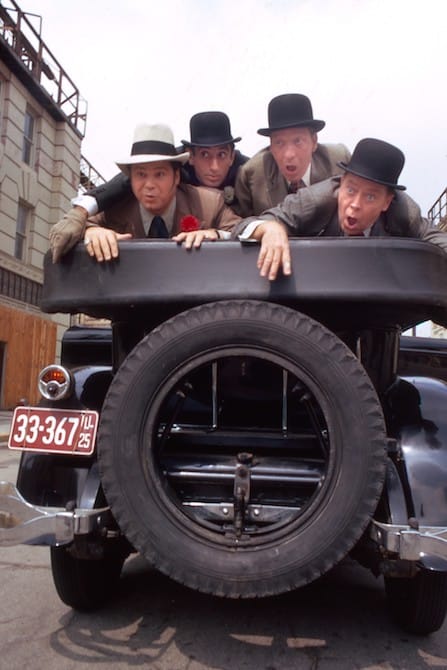
In fact, Jamie made his TV debut in 1955 on an episode of The Red Skelton Show and from there made guest appearances on virtually every other television sitcom, and many dramas, you could imagine before the 4077th came calling. And surprisingly, he wasn’t the least bit worried about typecasting as the cross-dressing Klinger. “Nobody ever remembers me,” he admitted to the Arizona Republic in 1973. “Although I’ve been in this business for 20 years and have made a nice living, I’ve one of those faces people just don’t recall. I always have to remind producers and casting directors the roles I’ve played and the series I’ve been in before. They look at me carefully, snap their fingers and say, ‘Oh, yeah! Now I know where I’ve seen you.'”
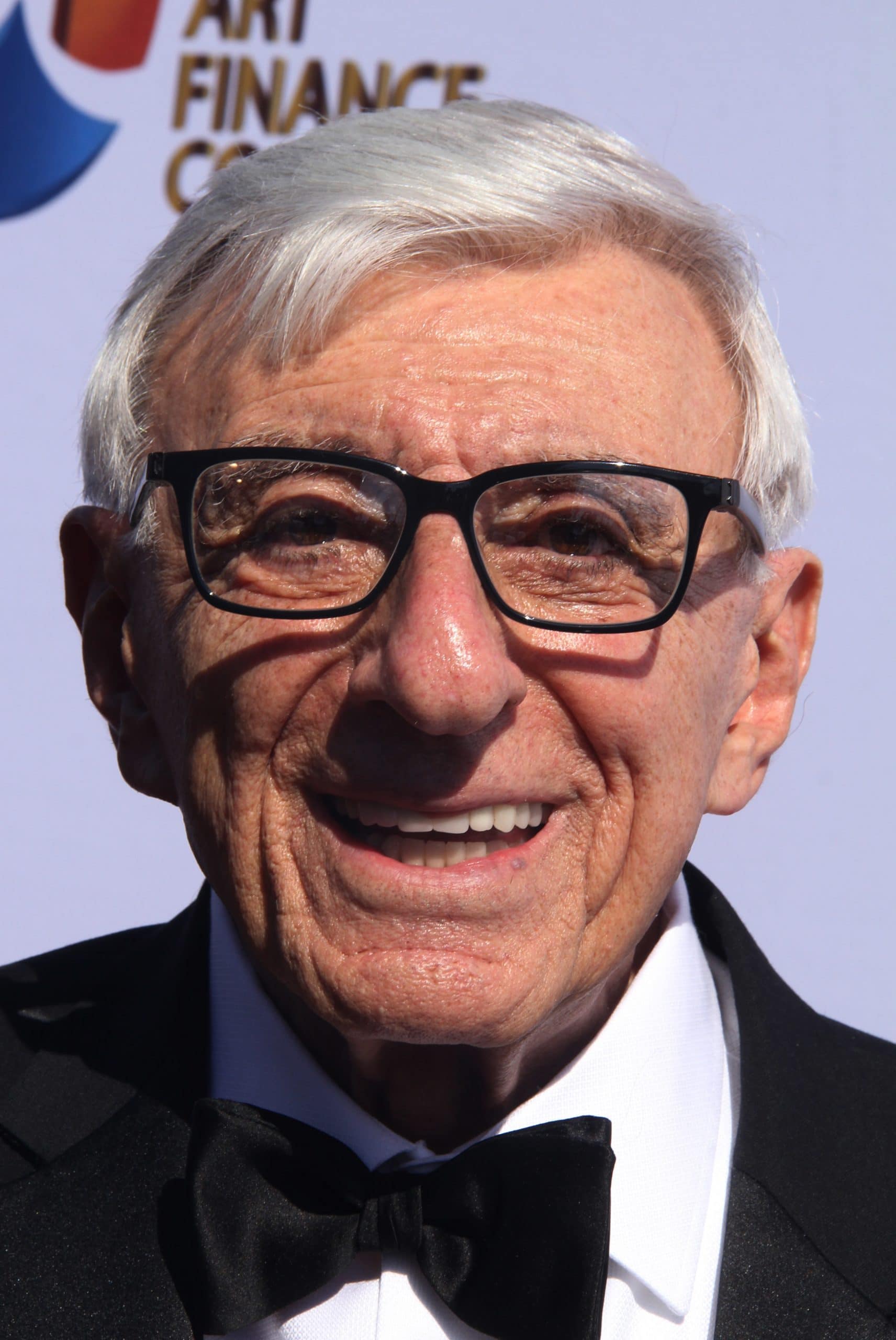
The gender-bending Klinger couldn’t have been played as memorably by anyone else as it was by Jamie, making his early worries about people not knowing him unnecessary. And it proves audiences thought that way as well, because Farr was originally only supposed to be in one episode, but the response resulted in his sticking around. Similar to Loretta, Jamie decided to tweak his character as the years ticked by, choosing to move away from the gender-bending aspect of Klinger out of respect to his family. He was worried his young children at the time would be teased at school. After Klinger took on the role of company clerk from Radar, he had pretty much put a stop to the routine altogether.
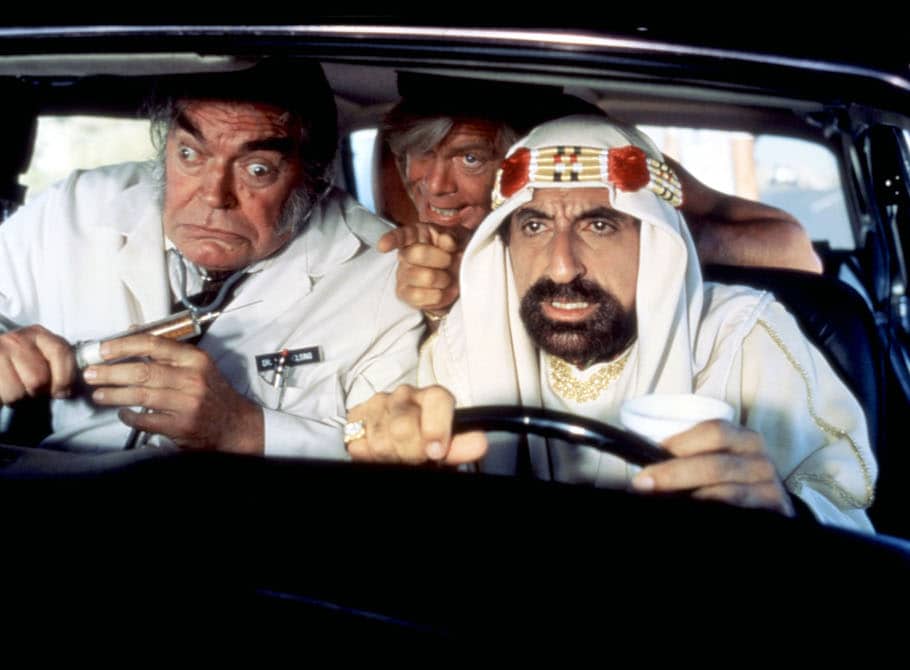
After MASH ended, Jamie Farr quickly jumped onto the big screen, with a role in the star-studded Cannonball Run II as “The Sheik.” He also was one of the main three characters who carried on their military duties to AfterMASH, the spinoff that followed Klinger, Colonel Potter, and Father Mulcahy to a veteran’s hospital. Most recently in 2018, you could see Jamie along with a whole slew of other stars from the past in The Cool Kids, a retirement center comedy starring David Alan Grier and Vicki Lawrence. That same year he was in the film Angels on Tap. Married to Joy Ann Richards since 1963, and the father of two, Jamie is currently 89.
4. William Christopher (Father Francis Mulcahy)

William Christopher was booking constant television work before any of the stars we’ve mentioned before. He was in both Hogan’s Heroes as several characters, but really caught people’s attention as Lester Hummel on 16 episodes of the military sitcom — and spin-off of The Andy Griffith Show — Gomer Pyle: USMC. When auditioning for his M*A*S*H role, William essentially ignored the prepared script and instead ad-libbed a rambling speech in his iconic priestly tone. The producers liked his performance and demeanor well enough to offer him the role, on one condition: That he would try to stick to the script.
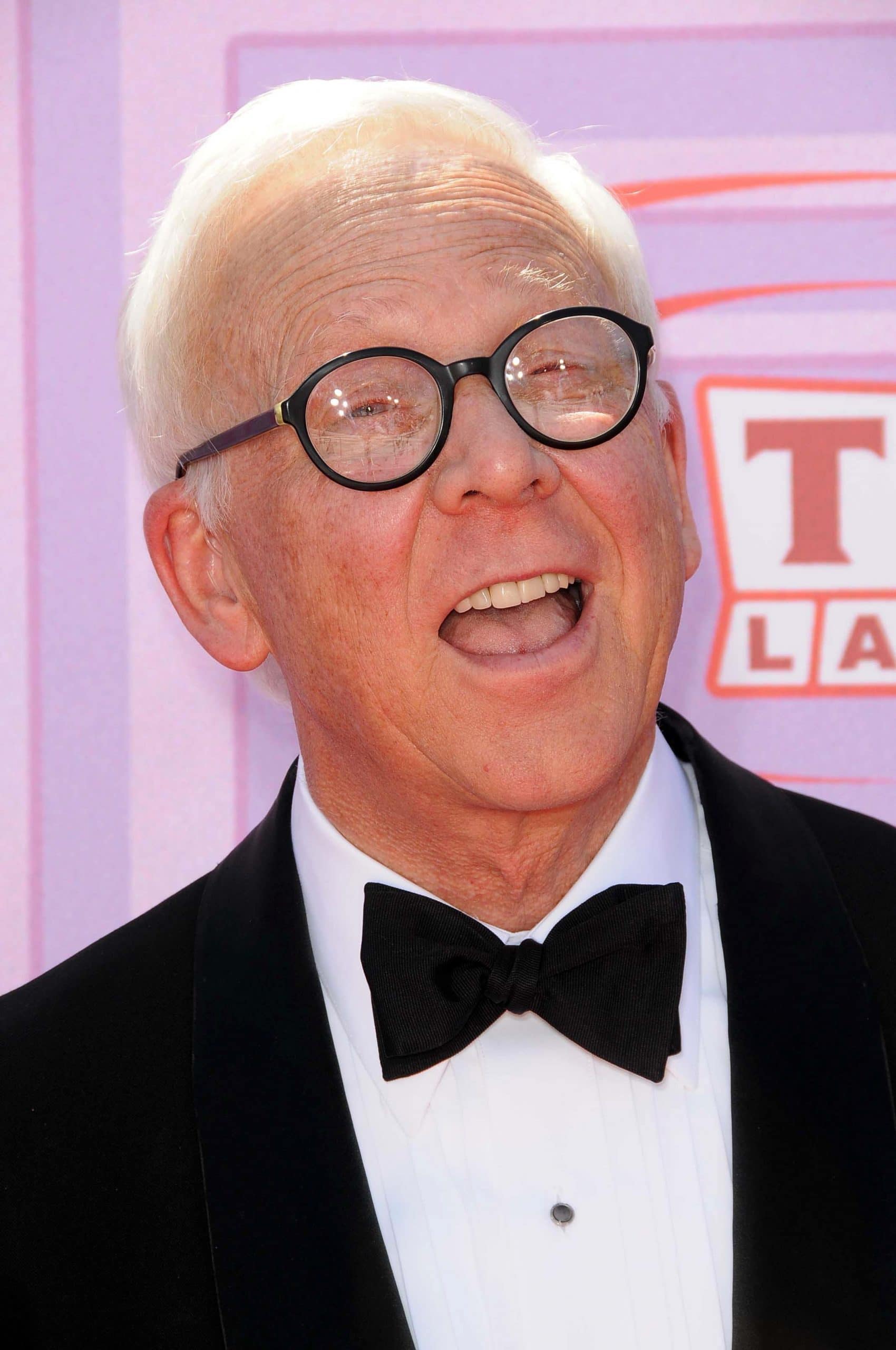
During his time on M*A*S*H, he was often unable to appear in episodes due to his responsibilities as a father raising an autistic son. At one point producers were preparing to cancel his contract until Alan Alda, once again the glue to the show, stepped in and advocated that William continue because his family needed the income. He, like Jamie Farr. starred in AfterMASH, then voiced Angel Smurf for The Smurfs 1984 series. William definitely suffered from the stigma of typecasting, as he played a priest in 1994, a chaplain in 1998, and, finally, his last work before his death, Father Tobias in 11 episodes of Days of Our Lives in 2012. William passed away in 2016 at age 84 from carcinoma. The father of two, he was married to Barbara O’Connor since 1957.
5. Harry Morgan (Colonel Sherman T. Potter)
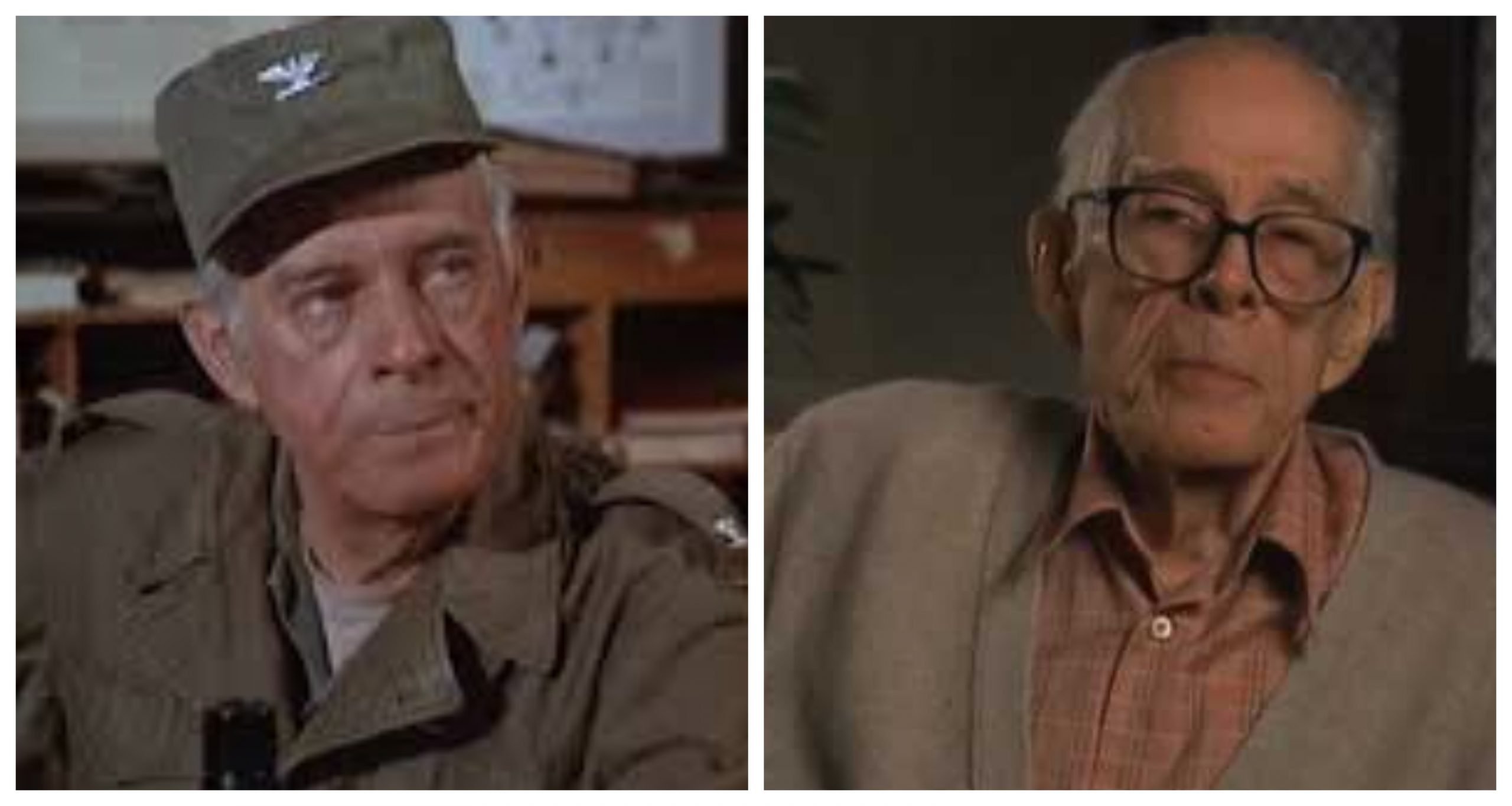
Before M*A*S*H, Harry Morgan was already a prolific actor whose television work included starring roles in the sitcoms December Bride (1954 to 1959) and Pete and Gladys (1960 to 1962). He went decidedly more dramatic as Officer Bill Gannon on Dragnet (1967 to 1970), which was followed by Amos Coogan on Hec Ramsey (1972 to 1974). He actually appeared on the third season episode of M*A*S*H titled “The General Flipped at Dawn,” the general in question not being Potter. Interestingly, cast members were unsure about his role in such a heavily comedic show. Almost immediately after filming began, though, they were won over by Morgan’s comedic acting chops. Given his background, it’s no secret why. His guest-appearance as General Steele was so successful, that when McLean Stevenson left the show, producers decided to bring back Harry Morgan to fill the surrogate parent role as Potter, remaining in the cast until the show’s conclusion.
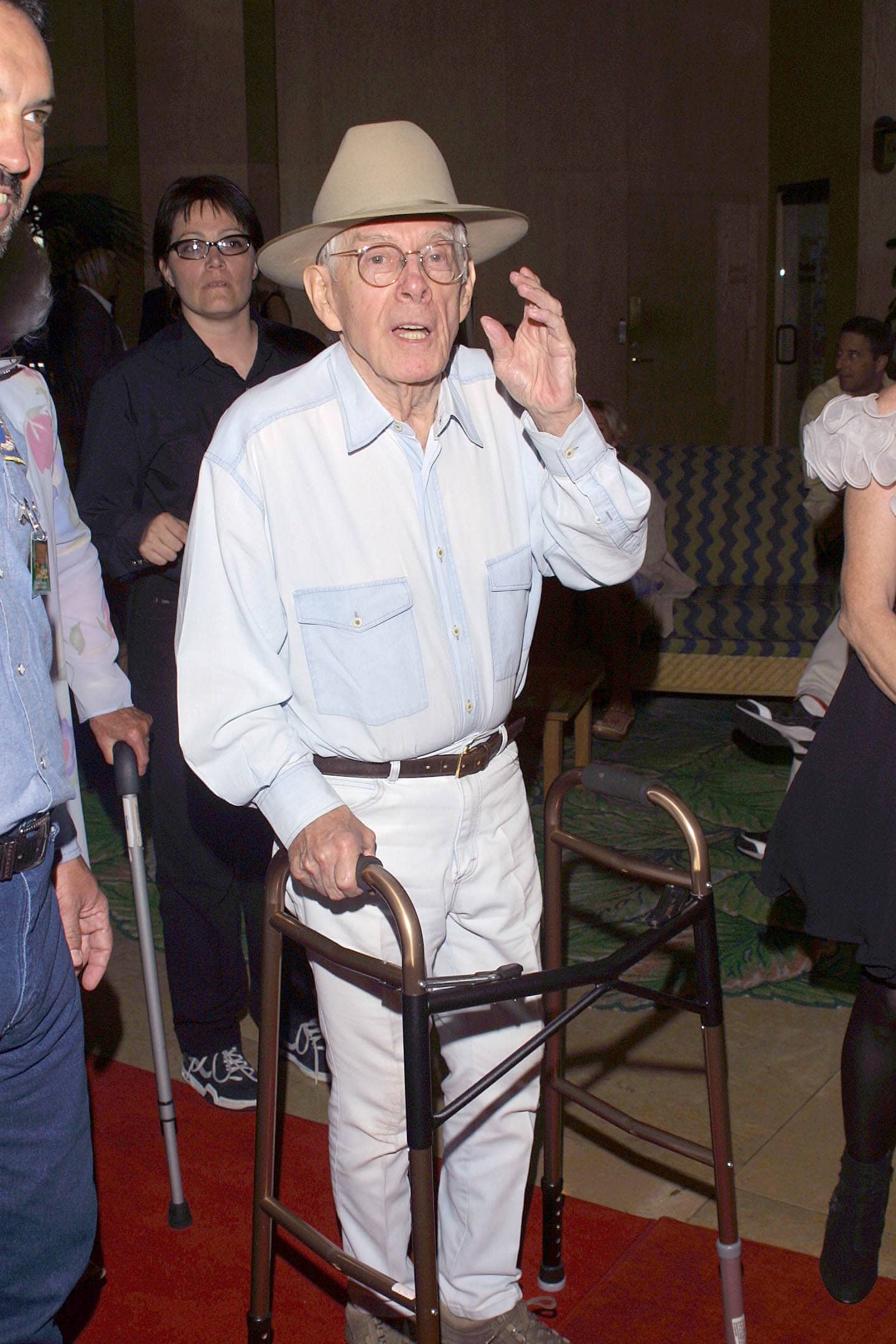
In 1983, when M*A*S*H was in its final season, a survey was done on the popularity of all TV stars and Alan Alda, Jamie Farr, and Harry Morgan were three of the top 10 (Alda #1, Morgan #2, and Farr #10). In an interview, Morgan said he had wanted to play Colonel Potter forever and no one could argue with that. After the farewell, he joined Farr and Christopher in AfterMASH, then co-starred with Hal Linden, who was fresh off the success of Barney Miller, as they looked for a bit of hocus-pocus in their show, Blacke’s Magic. Yes, a magician and his con-man father solving mysteries, but, sadly, it did not gain steam and was a bust.
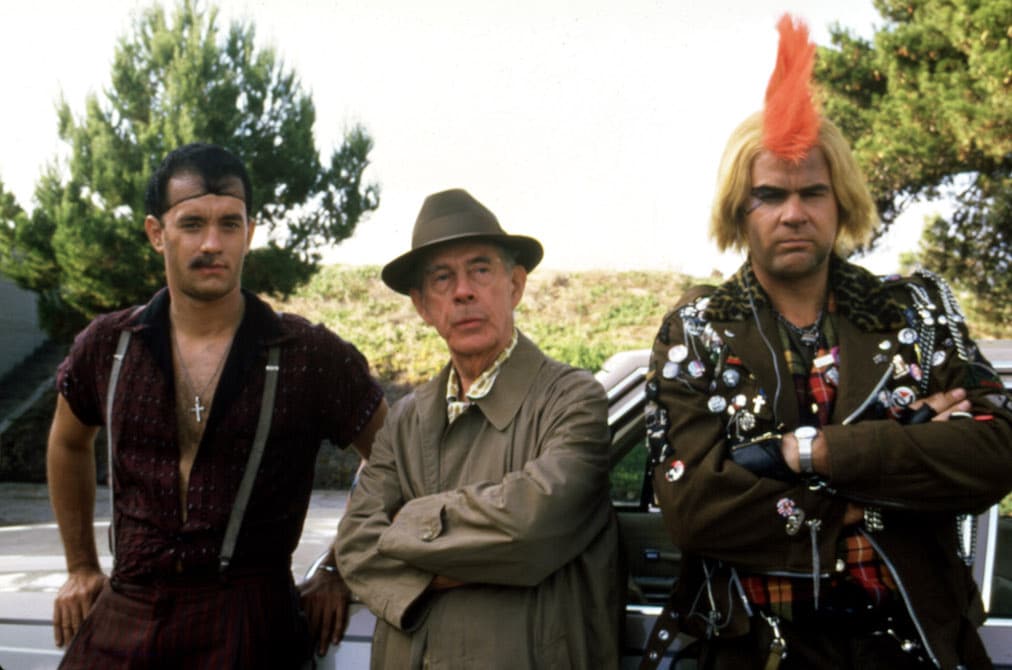
Harry was terrific in the comedic 1987 movie version of Dragnet (one of about 100 films he appeared in throughout his career) starring Tom Hanks and Dan Aykroyd, and in 1997 he completed his final recurring role on a TV series as Professor Suter on 3rd Rock from the Sun. Morgan died peacefully in his sleep at an impressive 96 years old in 2011.

At the time of his death, costar Mike Farrell issued this statement: “He was a wonderful man, a fabulous actor and a dear and close friend since the first day we worked together. As Alan [Alda] said, he did not have an unadorable bone in his body. He was a treasure as a person, an imp at times, and always a true professional. He had worked with the greats and never saw himself as one of them. But he was. He was the rock everyone depended on and yet he could cut up like a kid when the situation warranted it. He was the apotheosis, the finest example of what people call a ‘character actor’. What he brought to the work made everyone better. He made those who are thought of as ‘stars’ shine even more brightly. The love and admiration we all felt for him were returned tenfold in many, many ways. And the greatest and most selfless tribute to the experience we enjoyed was paid by Harry at the press conference when our show ended. He remarked that someone had asked him if working on M*A*S*H had made him a better actor. He responded by saying, ‘I don’t know about that, but it made me a better human being.’ It’s hard to imagine a better one.”
6. Gary Burghoff (Corporal ‘Radar’ O’Reilly)
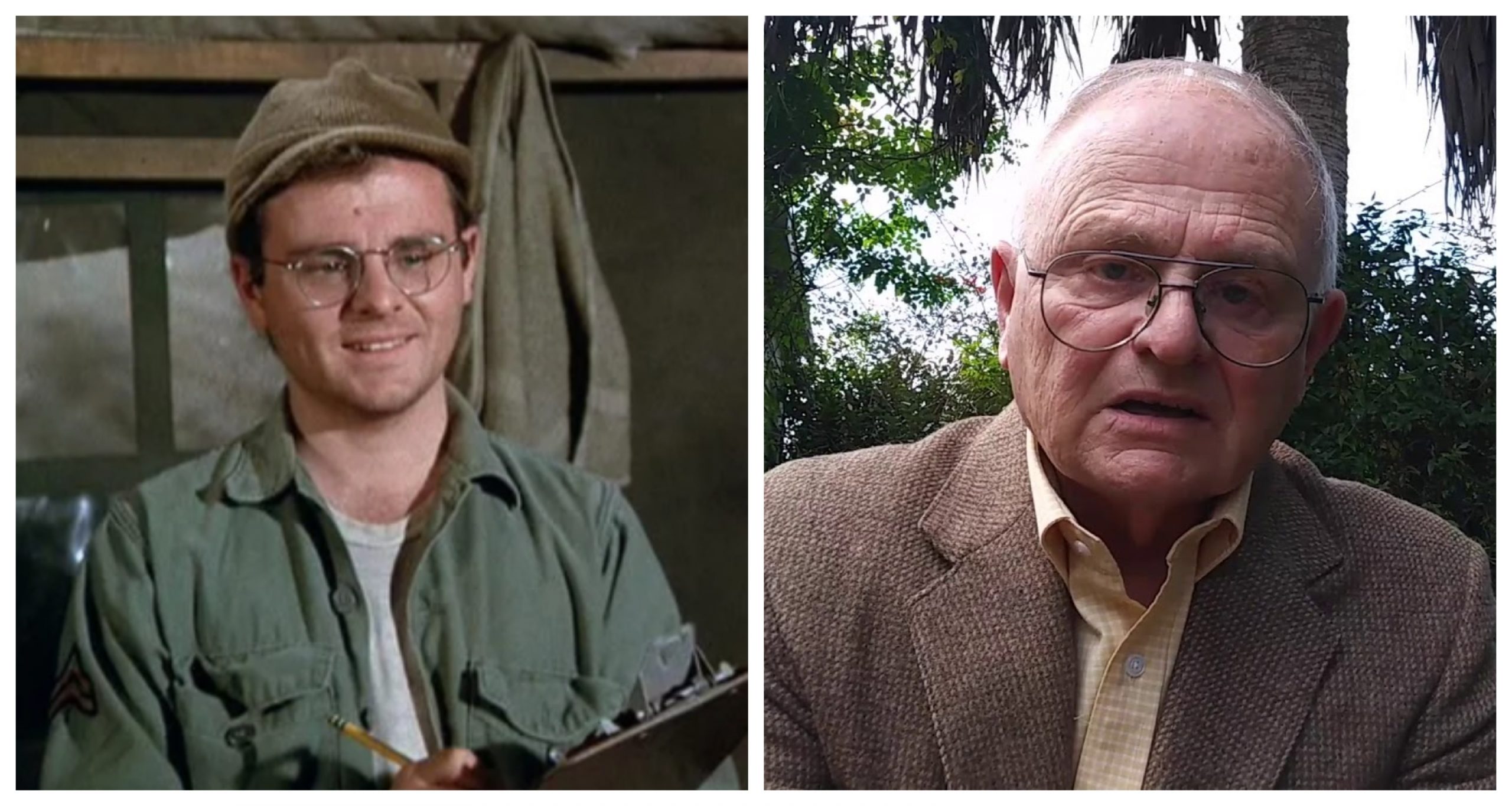
The humorous Corporal Radar O’Reilly was played by Gary Burghoff in both the original 1970 film version and subsequent television series. He was the only lead actor to do both, the producers taking note of his performance and casting him before anyone else. His character “Radar” on M*A*S*H , who showed a fondness for the care of animals, was actually inspired by Gary’s true love for wildlife. He once worked for the Animal Rehabilitation Clinic in Southern California. Gary left M*A*S*H after contract disputes and never again reached the heights that Radar provided. But he did move on.

Gary recorded a jazz album in the 1980s and continues to write music. This man really lived life after M*A*S*H, and then again after reprising the role of Radar in AfterMASH. He visited and fished in every state and is an inventor who holds several patents for fishing tackle, including Chum Magic, a floating device that can be filled with chum to attract fish. Gary says it helps increase catches by about 300 percent. His last acting credit was in 2010 for the movie Daniel’s Lot. Now 80, he’s been married twice and has three children.
7. Mike Farrell (Captain BJ Hunnicutt)
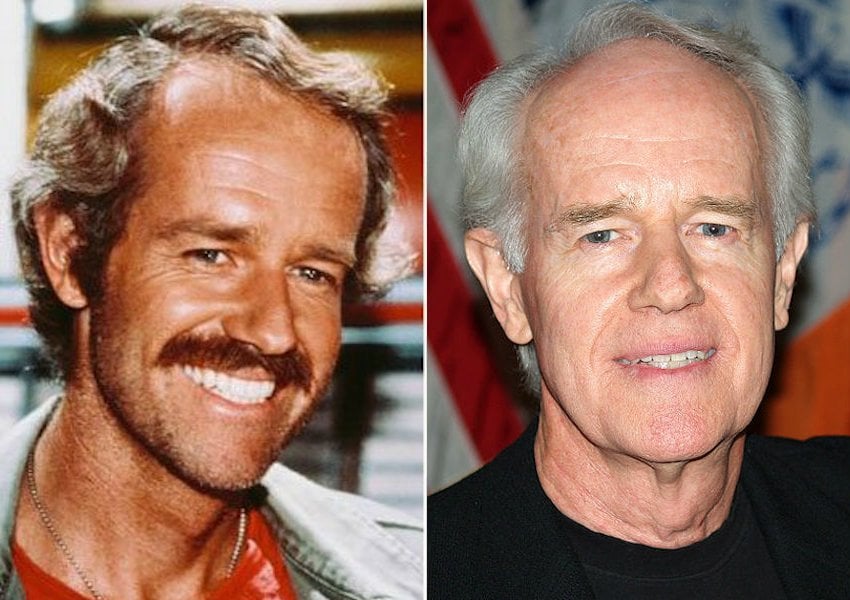
Mike Farrell is best friends with Alan Alda and no stranger to Hollywood stars, having attended West Hollywood Grammar School with the likes of Natalie Wood and Ricky Nelson. Farrell — who came in after Wayne Rogers as Trapper John left the show — was one heck of a Captain Hunnicutt, and such a great counterpart to Alan Alda. It was even Alan’s idea for him to grow a mustache in the seventh season, which he kept for the rest of the show’s run.
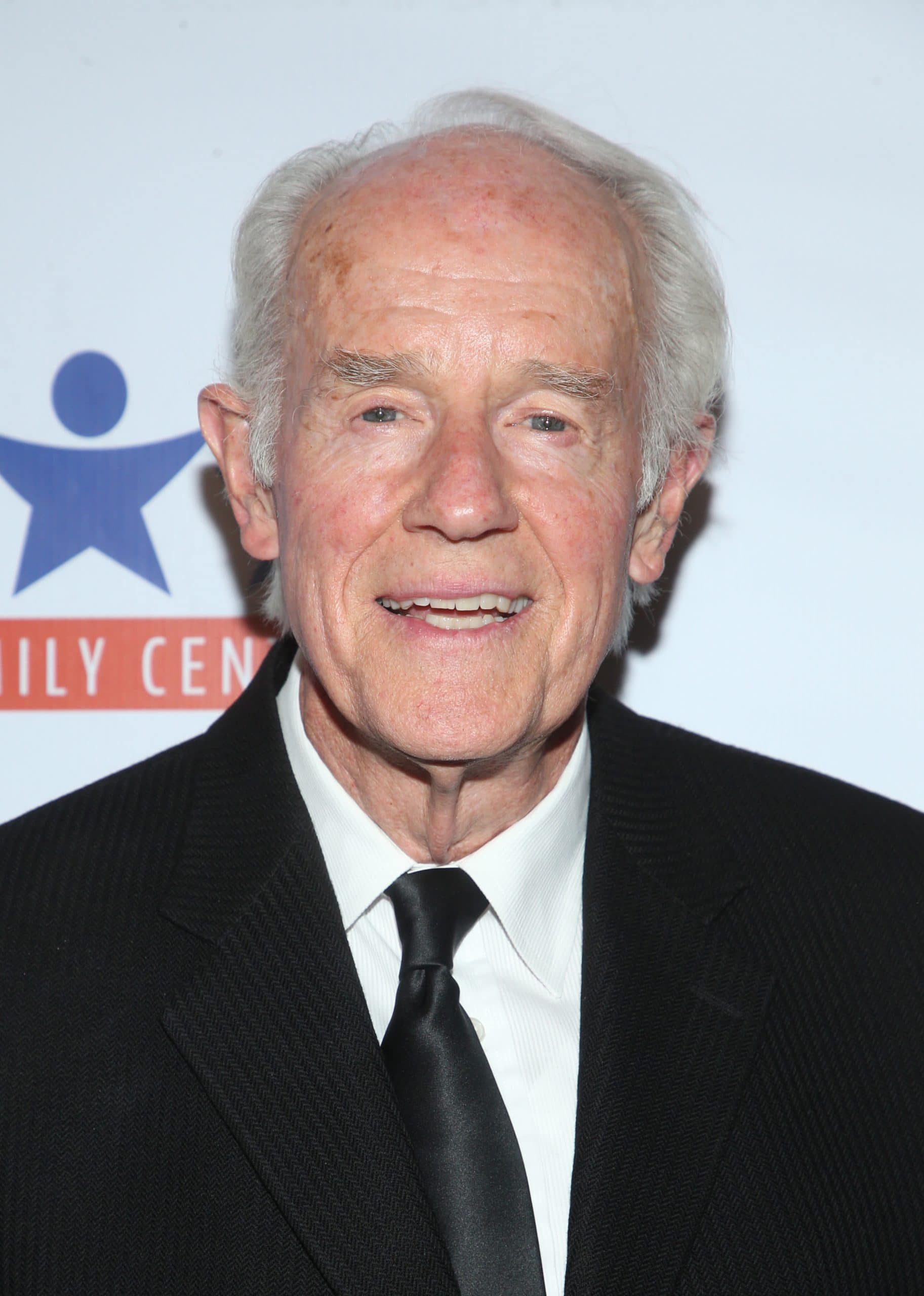
Mike’s career could have gone in a very different direction. In 1973 he starred with Robert Foxworth in the pilot for The Questor Tapes, created by Star Trek‘s Gene Roddenberry. In it, Foxworth was an android named Questor who had been put here to help humanity reach its future, and Farrell is Jerry Robinson, the man who activated him and now serves as a guide of sorts to the strengths of the human race. The pilot was very successful, but NBC and Universal decided that the the subsequent series should be like The Fugitive, with Questor moving from city to city on his quest, but without Jerry Farrell in the mix. The actor was dropped, though when it became obvious that things weren’t working without his character, they came back to him. Mike turned them down, feeling that coming back would be “exactly the wrong thing to do.” Questor came to a halt before filming started and it wasn’t long before M*A*S*H came looking for him.
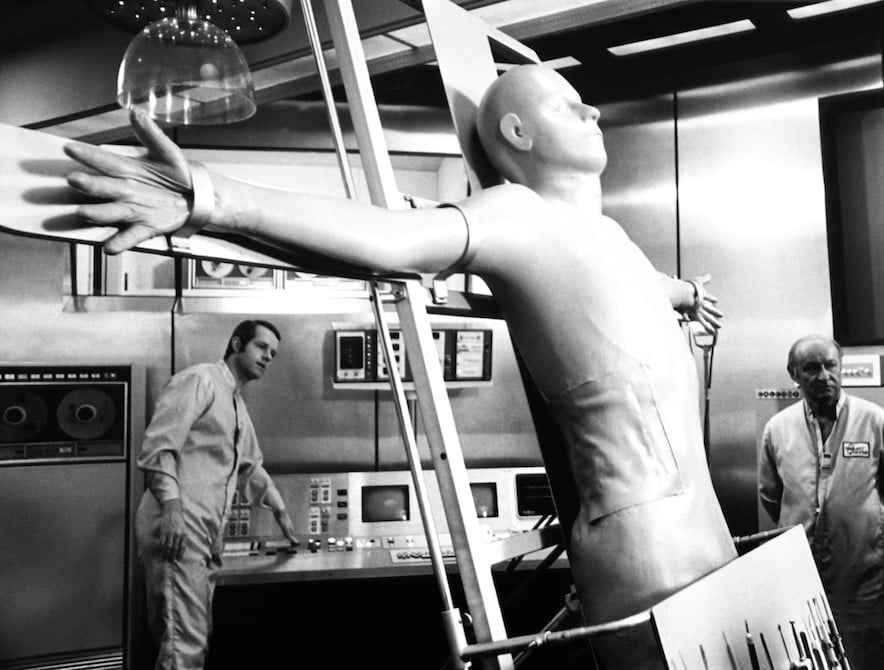
In 1986 Mike starred alongside Margot kidder and Fred Gwynne in Vanishing Act. He also took a role as a veterinarian in the series Providence, appearing in 64 of 96 episodes produced. He formed his own production company, which created the Robin Williams-led Patch Adams (1998), based on Farrell’s own acquaintance with the real-life doctor it focused on. As of today, he’s become a figure in politics, most notably his stance against the Iraq war and the death penalty in California. As an actor, his many credits include 2019 appearances in NCIS. The father of two, he has been married twice, first to Judy Hayden from 1963 to 1983 and Shelley Fabares (The Donna Reed Show, Coach) since 1984. He’s now 84.
8. Kellye Nakahara (Lt. Kellye Yamato)

While maybe not being as prominent as other cast members, Nurse Kellye was featured in 167 episodes, always rolling with the punches, light-hearted, and serious. The part Hawaiian and part Chinese Lieutenant always held her own on-screen.
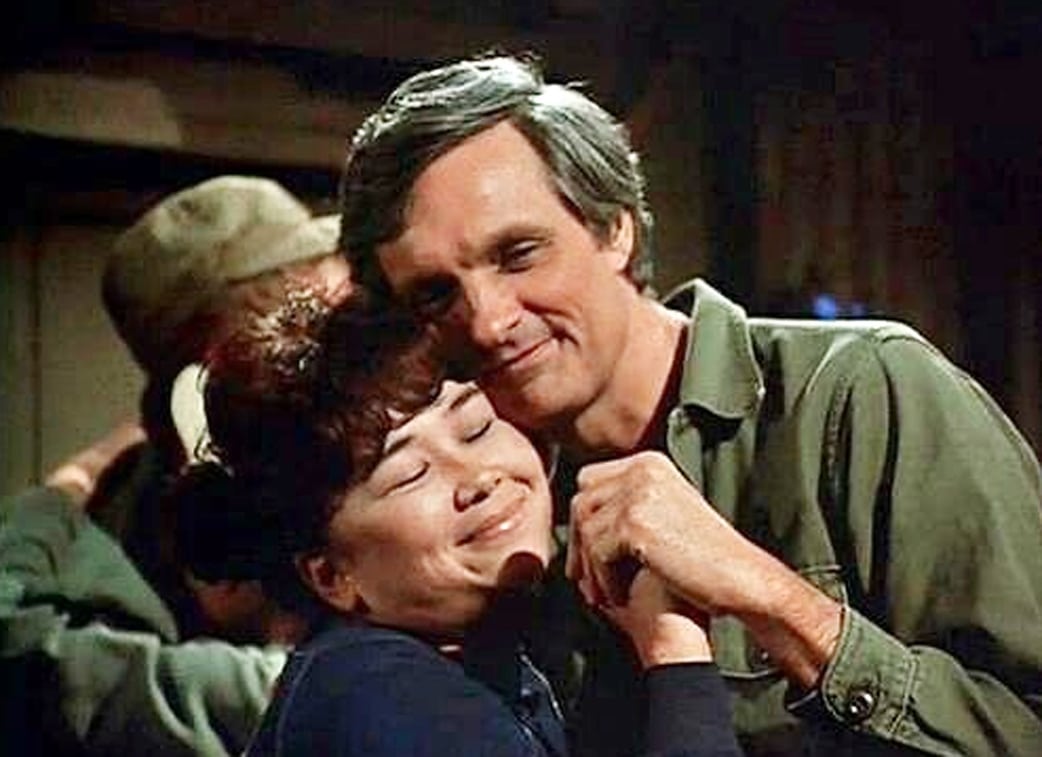
Actress Kellye Nakahara, who brought the nurse to life on all of those episodes, most notably went on to play the cook in the movie Clue and she made an appearance in a Sabrina the Teenage Witch episode. Kellye died of cancer in February 2020 at the age of 73.
9. Larry Linville (Major Frank Burns)
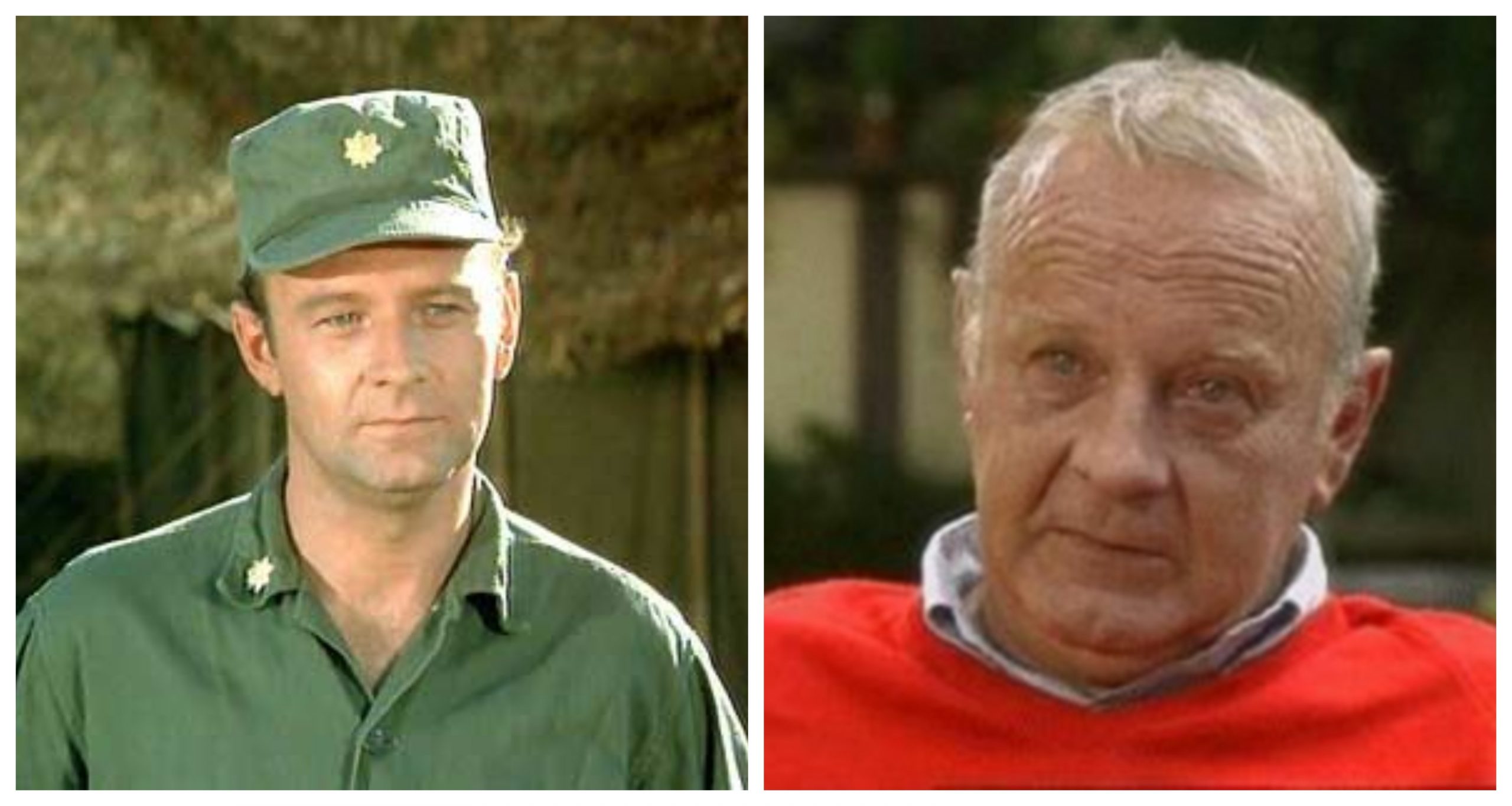
High-strung and overly-confident in his surgical skills, Burns was a staple on the show for five seasons before the actor in the role started feeling stifled and decided to depart. Over the next three decades, Larry Linville worked in TV consistently, on NBC’s Grandpa Goes to Washington in 1979, and then in 1981, he was on a short-lived spinoff of The Jeffersons titled Checking In.
Larry hit the big screen, too, with roles in Earth Girls Are Easy in 1988 and 1991’s Rock ‘n’ Roll High School Forever. In that one, if you haven’t seen it, Corey Feldman leads a rock and roll rally that Principal Major Frank Burns has to deal with, and, yeah, it’s a fun bad movie.
The father of one, Larry was married five times. On April 10, 2000 he died at age 60 after complications from cancer surgery.
10. David Ogden Stiers (Major Charles Winchester)

Major Winchester, with his discerning Boston accent being from Illinois, was the only cast member to use an accent. David Odgen Stiers, who played him, was very active after M*A*S*H. He starred in the popular CBS miniseries, North & South and its sequel, North & South: Book 2.
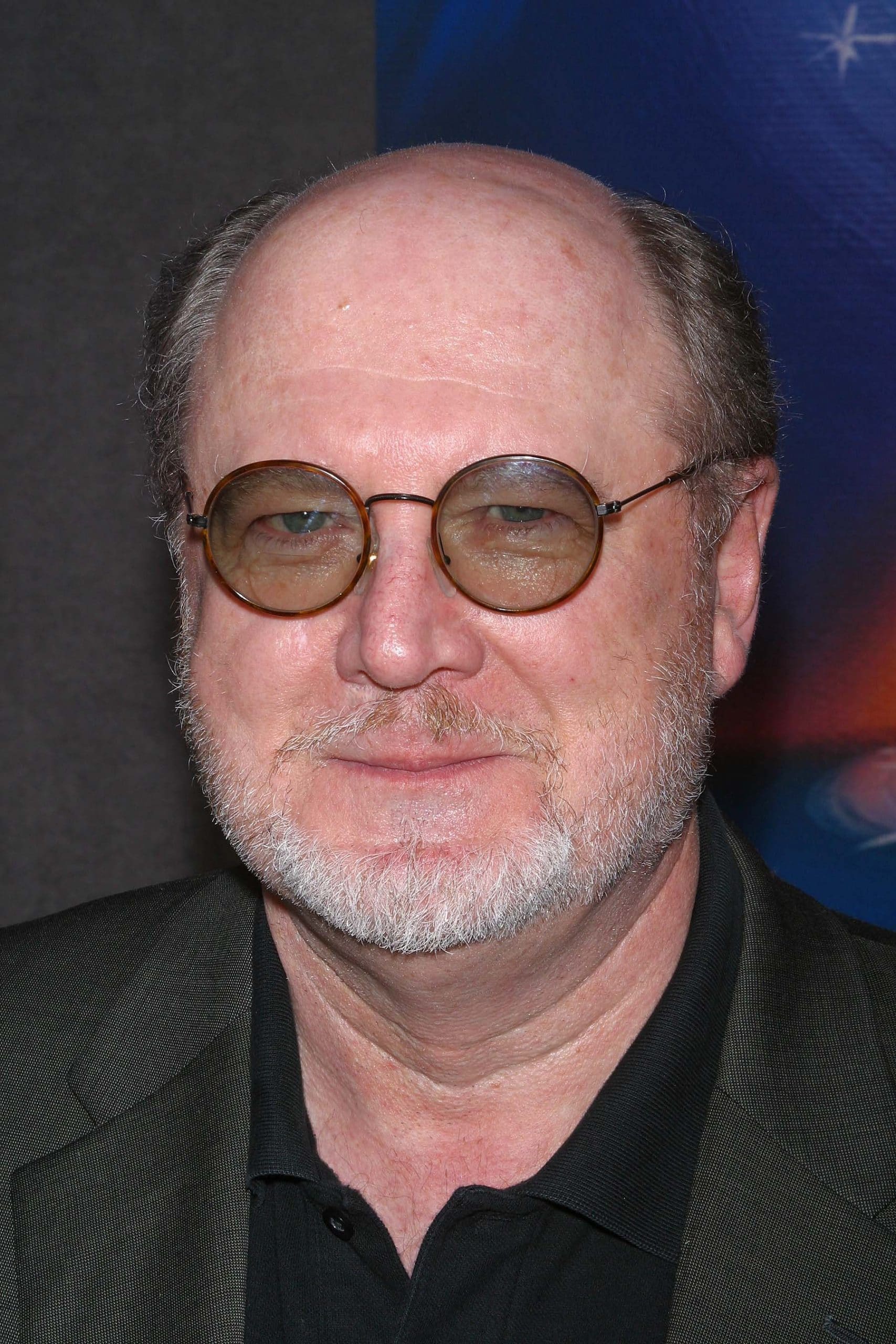
David really found success with voice acting, completing 66 episodes of the series Lilo and Stitch; multiple other entire seasons of animated work, roles in Pocahontas and the Hunchback of Notre Dame, and then the main feather in his cap: in 1991 David starred as both Cogsworth and the narrator in Disney’s smash hit, Beauty and the Beast. He died on March 3, 2018 at the age of 75 from complications related to bladder cancer.
11. Wayne Rogers (Trapper John McIntyre)
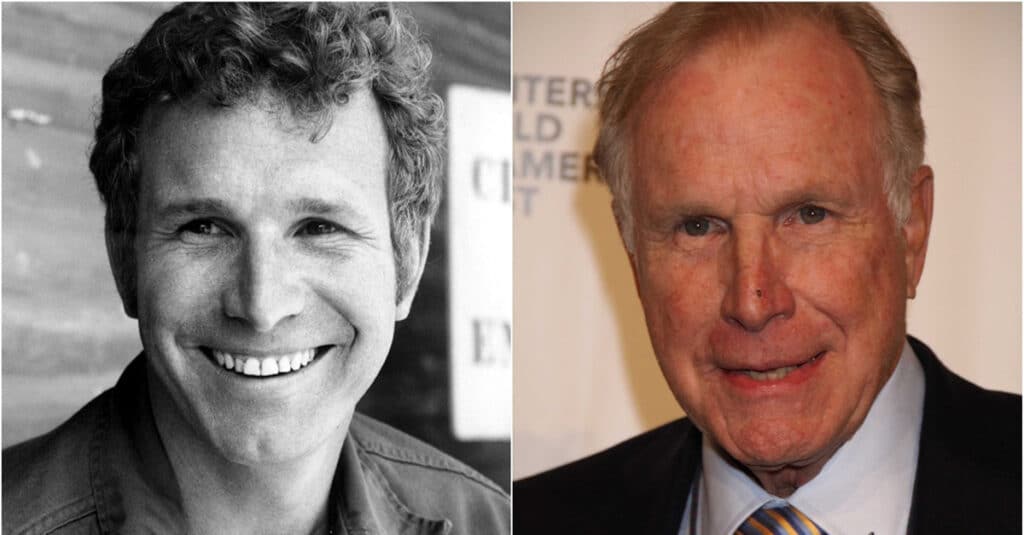
The connection between Hawkeye and BJ was pretty unbreakable, and the other person that he had that sort of connection with — though not as deep — was with Trapper John, as played by Wayne Rogers in the show’s first three seasons.
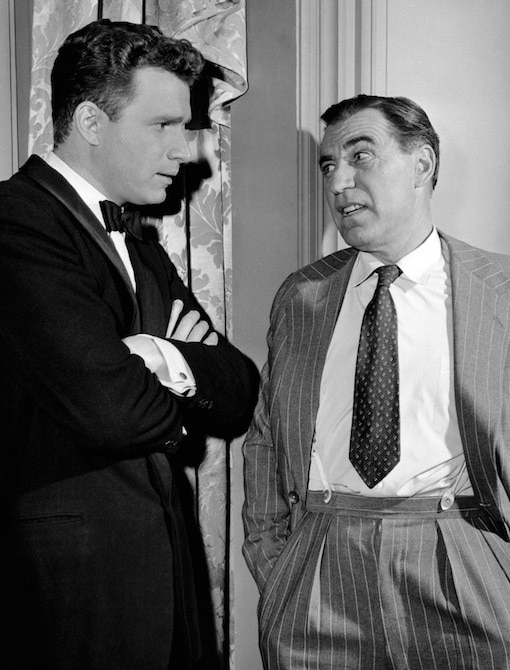
Wayne was born April 7, 1933 in Birmingham, Alabama. Before becoming an actor, he served in the United States Navy. In 1959 he played the character of Slim Davis on the daytime soap Search for Tomorrow, and the following year appeared in the film Odds Against Tomorrow. From 1960 to 1961 he co-starred on the Western series Stagecoach West. Small roles in other shows and films filled out the ’60s and early ’70s, before he was signed for M*A*S*H. Wanting to expand his acting horizons, he left the show before its fourth season, starring in the 1976 series City of Angels. From 1979 to 1982, he was cast alongside Lynn Redgrave and, then, Sharon Gless in the medical comedy House Calls. Bizarrely, in 1985 he was cast as Tony Nelson (replacing Larry Hagman, who was starring on Dallas) in the reunion movie I Dream of Jeannie: Fifteen Years Later.
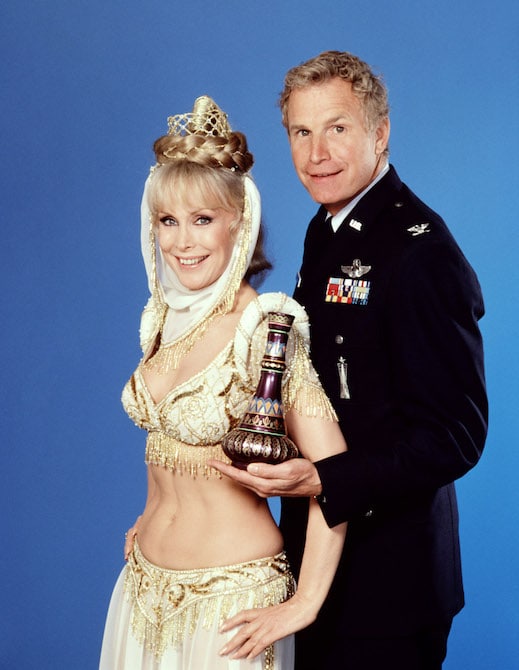
He acted on and off, taking small film roles between 1985’s The Gig and 2003’s Nobody Knows Anything!. During his time on M*A*S*H, he began exploring the real estate and stock markets, and eventually appeared as a panel member on the Fox Business Network. In 2006, he found himself elected to the board of directors of Vishay Intertechnology, Inc, and was ultimately behind the stock trading investing corporation, Wayne Rogers & Co.
Wayne was married twice and has two children. He died at age 82 from complications of pneumonia on December 31, 2015.
12. McLean Stevenson (Lieutenant Colonel Henry Blake)
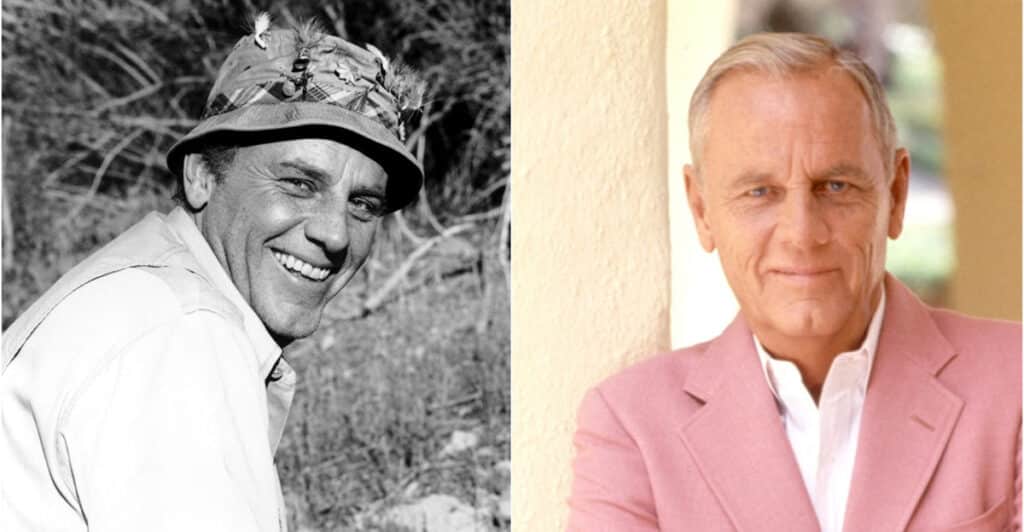
Henry Blake was a physician called up to active duty, taken from his private practice in Illinois and brought in to command the 4077th. Far from by the book, in many ways he is pretty laid back. When the actor who plays him, McLean Stevenson, wanted out of the show following season three, the writers killed him off in an attack while he was flying back home, a fact the other actors did not know so the response from them we see when they hear the news — while performing surgery — is very real.
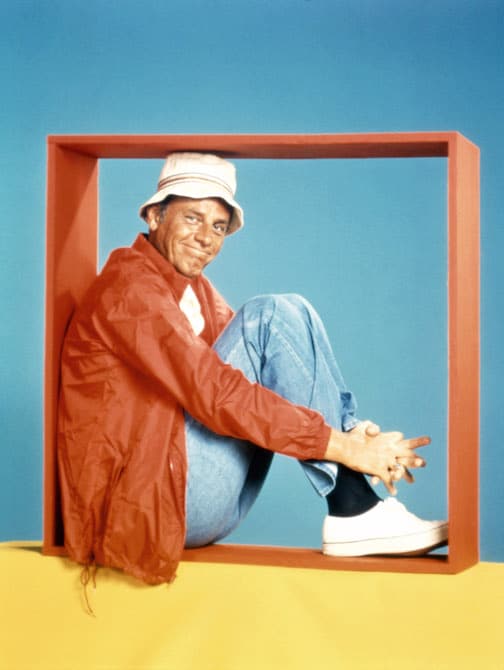
Born November 14, 1927 in Normal, Illinois, McLean served in the Navy from 1946 to 1947. Afterwards, he attended Northwestern University, graduating with a bachelor’s degree in theater arts. His first gigs were working at a radio station and playing a clown on a live TV show in Dallas. Eventually he got his start in theater, being cast in various summer stock productions. Making his way to Broadway, he also began writing for television variety shows and occasionally appearing in skits. There were also a number of TV commercials in the late ’60s and early ’70s as well as a few TV guest appearances. Then he was cast as Henry Blake on M*A*S*H, but, as was the case with Wayne Rogers, he grew tired of being a supporting player and departed.
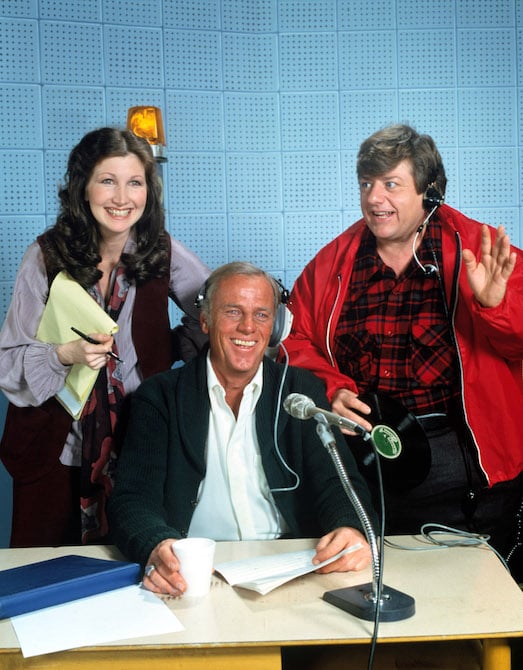
Afterwards, he would periodically become a guest panelist on the TV game show Match Game. He got his wish for a show in which he was the star in the form of a self-titled variety show, but, aired initially as a special, the ratings were so low that plans for additional episodes were scrapped. He shifted over to the sitcoms The McLean Stevenson Show (1976 to 1977), In the Beginning (1978), Hello, Larry (1979 to 1980) and Condo (1983). Subsequently there were guest appearances and, yes, a supporting role on the TV version of Dirty Dancing, but no matter what he tried, he could not duplicate the success of M*A*S*H.
On February 15, 1996, while recovering from bladder cancer surgery, he died of a sudden heart attack at the age of 68. He was married three times.

What a cast. In case you need more evidence of how great this ensemble of performers was, watch the finale again, and look at the emotion on their faces as they say goodbye to each other. Interestingly, the finale was shot early in the season for scheduling reasons, meaning that they had to honestly live in those departing moments, say goodbye, and then clean the slate to carry on to craft a handful of other episodes. The cast of M*A*S*H will go down as a top ensemble in television history.
